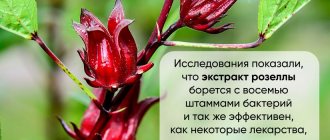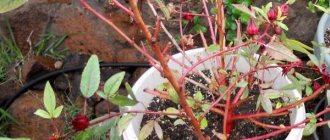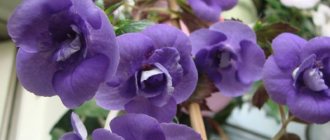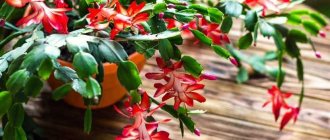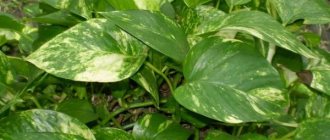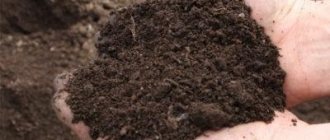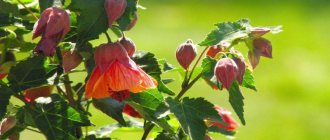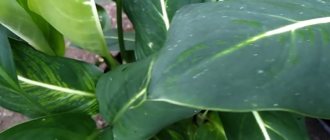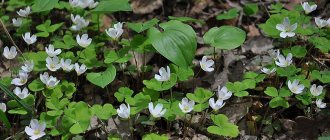Sudanese rose (Rosella, Hibiscus) - what is it
But, of course, first you need to figure out what kind of plant it is. Sudanese rose, Hibiscus, Venice mallow - all this is the same flower, which belongs to the genus Hibiscus, the Malvaceae family. The so-called drink of the pharaohs is prepared from this plant, which is known among ordinary people as Hibiscus.
Sudanese rose in all its glory
Description, what it looks like, characteristics
In general, the plant is very beautiful, it is a tall herbaceous shrub - in the wild it can easily grow up to 3.5 meters. It boasts a very powerful root system, which allows it to obtain water from considerable depths, surviving even in the driest regions.
Young plants have stems that are deep green and reddish on top.
The leaf blades are jagged and slightly rough. The flowers are beautiful, bright red and quite large - up to 6 cm. They are collected in inflorescences, which makes them look even more impressive.
For reference! The Latin name of the plant is Hibiscus sabdariffa. In Russia, its botanical name is written as Hibiscus sabdariffa.
Application, medicinal properties
However, this plant is not only beautiful in appearance, but can also bring serious benefits. The composition of the drink prepared from its flowers includes:
- bioflavonoids,
- vital microelements,
- valuable fruit acids,
- vitamins B, C, R.
Tasty and healthy drink
Many experts recommend drinking this tea to artists, photographers, as well as people who work at the computer - the substance quercetin, which is part of its composition, relieves eye fatigue, and at the same time sharpens vision. And a whole complex of vitamins makes it an excellent remedy for the prevention of seasonal colds.
Interesting! Hibiscus is useful for older people, as the drink reduces cholesterol in the blood, destroys plaque in blood vessels and helps with atherosclerosis.
But there are also contraindications. For example, people suffering from diseases affecting the gastrointestinal tract are better off not drinking it - the drink can cause serious harm by increasing the level of acidity.
Description of hibiscus Scarlet cocktail
Sudanese rose (Hibiscus sabdariffa, Scarlet Cocktail) is a perennial herbaceous plant of the Malvaceae family. In natural conditions, it is a spreading shrub with a powerful root system, reaching 3 m 50 cm in height.
Young shoots of the plant are reddish-green in color; woody shoots look gray-green due to the numerous cracks with which the bark is covered.
The leaves are rough, oval, and on young shoots have a pointed apex.
The flowers are small, 6-7 cm in diameter, solitary, sitting on short stalks. The petals are a rich red hue, less often pink, cream, purple. The perianths are dense, fleshy, dark red.
However, if a person has acidity, stomach ulcers, or urolithiasis, he should not drink this tea.
What you need to know about hibiscus:
How to grow Sudanese rose
Of course, people living in warm latitudes may well try growing hibiscus in open ground. If frost is possible in winter, you should think about a reliable shelter - for example, a prefabricated greenhouse.
Ground cover roses - what are they, varieties
The first flowers will appear on the plant at about the age of 5 years when propagated by seeds and 3-4 years when using cuttings. Therefore, there is no need to expect quick results when growing Sudanese roses.
Well, the rest have no choice but to grow an unusual flower right at home, for example, on a windowsill.
Propagation by cuttings and seeds
Of course, purchasing Sudanese rose seed is much easier - you can easily order it online. In addition, an important feature is good germination - even after 3-5 years, almost all seeds hatch.
Landing does not cause serious problems:
- The planting material is disinfected - it can be kept for about an hour in a warm solution of potassium permanganate.
- The seeds are soaked in a suitable growth stimulant - the easiest way is to keep them in cotton cloth soaked in Kornevin solution until the first shoots appear.
- The germinated seeds are planted in separate pots and after 20-30 days the first shoots will appear above the surface.
Propagation by cuttings allows you to save a lot of time - at least 1-2 years. But they are also much more difficult to obtain than seeds. The problem is complicated by the fact that only young shoots, annual ones, can be used. It is best to plant them in late spring - early summer. The optimal length of cuttings is 10-15 cm.
For reference! Wood ash can be a good feed for Sudanese roses.
A day before planting, the cuttings are dipped in a root growth stimulator solution and then planted in a pot with a suitable soil mixture. To create a greenhouse effect, the pot is placed in a plastic bag or the cutting is covered with a cut plastic bottle.
Features of planting and caring for hibiscus
Growing in an apartment
The plant prefers flowerpots based on the size of the root system. In cramped spaces it will develop poorly and look depressed, and in too spacious spaces the roots may rot.
To grow Sudanese roses at home, you need to prepare a nutritious soil mixture from equal parts of leaf and turf soil, rotted humus and river sand.
Before planting the plant in the prepared soil mixture, it must be calcined in the oven for 30-45 minutes. This will destroy most pests and pathogenic bacteria. Such treatment will not affect the quality of the soil.
Coarse river sand or medium-fraction expanded clay can be used as drainage. The drainage layer must be at least 4 cm.
Tip: if you don’t have commercial drainage at hand, you can put crushed stone washed and calcined in the oven at the bottom of the flowerpot.
In the first two to three years, the Sudanese rose needs annual replanting, then replanted every two or three years. For adult specimens that are more than 8-10 years old, only the top layer of soil is replaced by 5 cm.
Regularly pinch the tops of young shoots. This promotes better branching of the bush and the formation of flower buds, which form only on the shoots of the current year.
Hibiscus feels equally good both in bright sun and in partial shade. However, a lack of sunlight can negatively affect its flowering.
During the midday hours, the plant should be shaded.
Water the Sudanese rose after the top layer of soil has dried. Water for irrigation should be settled and warm. In summer, water abundantly, in winter - moderately.
For abundant flowering, the Sudanese rose is fed with fertilizers for flowering plants or special ones intended for hibiscus.
Sudanese rose or hibiscus:
In the open ground
Sudanese rose can be grown in a flower bed as an annual. Rooted cuttings are planted in open ground in spring or early summer, when the air temperature at night does not drop below +15°C.
Planting material is prepared in advance: in July-August, during scheduled pruning.
To do this, cut cuttings with four to five internodes using a sharp knife or pruning shears and soak for 1 hour in a solution of any root formation stimulator.
After this, they are planted in plastic cups filled with light soil with the addition of perlite or vermiculite, moistened and placed under a plastic bag.
After this, without washing off the juice, plant it in the prepared soil mixture.
In a month, the regrown roots will be visible through the transparent walls of the glasses. After this, the cuttings are transplanted into small pots and cared for as described above.
The plant in the flowerbed quickly turns into a beautiful bush, strewn with bright flowers. It is undemanding to watering, can withstand direct sunlight, and is content with one or two feedings.
In open ground, this plant will bloom until cool weather arrives.
After this, it can be transplanted into a flowerpot and moved indoors for the winter. With the arrival of spring, the shoots are shortened and the plant is planted in a flower bed.
How to plant at home
However, it is not enough to know how to propagate Sudanese rose. It is equally important to have an idea of the optimal conditions of detention. Still, this plant is quite whimsical, and even minor mistakes may well lead to it withering and dying. Therefore, there are simply no trifles here - you need to understand everything thoroughly.
Soil for planting
White bloom on roses - what is it and how to treat it
Of course, first of all, when you decide to plant a Sudanese rose at home, you need to choose the right soil. Regular soil from the store will not work - you will have to make the substrate yourself. On the one hand, it should be light, and on the other, nutritious. The plant also reacts positively to acidic soil.
It is best to mix in equal proportions:
- sand,
- leaf soil,
- peat,
- humus.
On such soil, the Sudanese rose will grow and develop as quickly as possible.
Necessary conditions for cultivation
In order for the plant to feel comfortable and grow quickly, you need to create optimal conditions. One of the most important is the correct temperature. Sudanese rose feels best at +15..+18 degrees in winter and at +20..+25 degrees in summer.
In addition, she loves high humidity. If the apartment is too dry, the leaves will begin to dry - from the tips, and then further. Avoiding this is quite simple - spray the plant with a spray bottle once or twice a day.
Attention! In summer you need to water more abundantly, but in winter, when the Sudanese rose hardly grows, it is enough to lightly moisten the soil once or twice a week so that it does not dry out.
Methods for propagating self-rooted roses
The most common and simplest method of propagating this type of rose bushes is planting with green cuttings. Rooting shoots this way is very simple. This does not require specific skills. The main thing is to know the nuances of such a landing.
It is best to choose varieties that are characterized by rapid rooting rates.
- Large-flowered and small-flowered varieties of climbing, semi-climbing and miniature varieties.
- Medium-rooting remontant, floribunda, tea hybrids.
It is recommended to choose spacious areas for planting rooted bushes, as they grow very quickly.
Additional Information! Roses prefer to grow in open areas, on hills. It is also not advisable for water to accumulate in the rose garden in the spring.
Cuttings of self-rooted roses are best done in early spring in April, immediately after the snow has melted and the soil has begun to warm up.
What cuttings should look like
Preparatory stage of planting cuttings:
- Annual shoots are suitable for planting.
- They are cut into lengths of 20-25 cm.
- All buds and lower leaves must be torn off immediately.
- Then the cuttings are placed in a solution of potassium permanganate. For greater effect, it is recommended to place them in a growth activator, for example, Kornevin or Epin, for several hours.
- After this, the lower side of the cutting is cut at an acute angle and left on the windowsill so that the branch dries from water.
- The last stage is planting in the ground. You can use a universal soil mixture. During planting, cuttings are buried so that 2-3 buds remain in the ground, and the other 3 on the surface.
The cuttings can be planted in a peat pot and immediately planted in open ground. In this case, the above-ground part is covered with a glass jar so that the root formation process takes place as actively as possible.
Planting cuttings
During the rooting process, it is necessary to monitor the humidity level. If there are droplets of water in the jar, then the humidity level is normal. If there are none, you need to remove the jar, spray it inside and water the cutting. Several times a week, the jar needs to be raised for 10 minutes to allow the soil to breathe.
After a few weeks, leaves will begin to appear on the cutting, but the jar must not be removed until the young shoot is placed inside the jar. Also at this time they begin to harden the rose. In the evenings, the jars are removed, and every day the time the rose stays in the open air increases.
Important! If rooting was carried out in the fall, then the jars are left for the winter and be sure to cover them with bastweed. After rooting is complete, the roses can be planted in a permanent place
To do this, you need to dig holes, fill the bottom with drainage mixed with soil and plant a bush. After planting, be sure to water the bushes generously with warm water.
After rooting is completed, the roses can be planted in a permanent place. To do this, you need to dig holes, fill the bottom with drainage mixed with soil and plant a bush. After planting, be sure to water the bushes generously with warm water.
Protection from diseases and pests
Any plant can suffer from various pests and diseases. Hibiscus is no exception. Therefore, you need to prepare for such a turn in advance.
Harvest from the bush
Of the pests, the most problematic are the common aphid, as well as the spider mite. However, they do not like humidity and usually do not appear with regular spraying. If insects do appear, then you can use any medicinal product - most often, two or three treatments are enough to solve the problem.
The most dangerous diseases are bacterial cancer and anthracnose. A very effective remedy for the latter is a 1% solution of Bordeaux mixture. Bacterial cancer is much more dangerous - the plant will have to be destroyed so that the disease does not spread to others.
The Sudanese rose is not on the list of the most whimsical, although it requires certain conditions of maintenance. Any beginning flower lover will be able to grow hibiscus if he sets such a goal and studies the theory.
How to care?
Hibiscus Sudanese rose is considered one of the most unpretentious houseplants to care for. Growing it does not require any special effort, but it is necessary to follow certain rules. Only in this case will rosella delight you with shiny bright leaves and large flowers.
Landing. A plant purchased in a store, or grown from cuttings or seeds, is planted in a specially prepared earthen mixture. You can buy it ready-made, but experienced gardeners prefer to prepare the soil themselves. For the earth mixture you will need leaf and turf soil, peat, sand. A drainage layer of river pebbles or small stones is placed on the bottom of a spacious dish.
The plant is planted without deep deepening and watered abundantly after planting.
- The soil for Sudanese roses must, first of all, be nutritious. In addition to the specified composition of the earth mixture, a mixture is also used, consisting of one part of turf and leaf soil, half of a part of humus earth with the addition of a small amount of sand. Peat is added only for young plants. It is necessary to take the same amount as turf or leaf soil was taken. Drainage can be made not only from stones, but also from expanded clay, pieces of red brick or clay shards.
- Transplanting Sudanese hibiscus requires special attention. First of all, this concerns the root system. The plant is replanted using the transshipment method so as not to damage the roots. The best time of year for replanting is spring. The containers are selected so that the diameter of the new pot is two or three centimeters larger than the diameter of the previous one. Preliminary preparation of the plant for transplantation involves cutting the branches to about a third of their current length.
The frequency of transplanting young hibiscus under five years of age is once a year. Mature plants from five years old are replanted no more than once every three or four years.A Sudanese rose growing in a large tub does not need to be replanted, limiting itself to changing the top layer of soil.
- Watering Sudanese hibiscus is carried out in a mode strictly corresponding to the current time of year. The plant loves moisture, so in summer the soil is kept constantly moist. In winter the situation changes. Watering becomes moderate, without waterlogging or excessive drying out of the soil. The water temperature for irrigation should not be too low.
Frequent drying out leads to hibiscus dropping buds.
Like many moisture-loving plants, the Sudanese rose needs not only proper watering, but also regular spraying. In winter, due to the functioning of the central heating, the humidity can be increased using humidifiers. In summer, or at high air temperatures in winter, the plant must be sprayed generously and often.
Regular spraying protects the plant from aphids!
- Fertilizers are applied regularly after abundant watering. The plant is fed every week using organic and mineral fertilizers. To increase the intensity of flowering, phosphate-containing compounds are suitable. The rest period involves feeding no more than once a month.
- It is best to place rosella on a light windowsill, as the plant loves bright light. In winter it is necessary to organize additional lighting.
- The air temperature in the room where the Sudanese hibiscus is located should be within 25 degrees in the summer, subject to frequent ventilation, and not lower than 12 degrees in the winter.
In order for the Sudanese rose to live its usual period of twenty or more years, in addition to a special watering regime and regular fertilizing, pinching and pruning must be performed. Pruning is carried out every year and stimulates abundant flowering. The reason is that flowers appear only on young shoots. Pinching and pruning not only form the desired shape of the bush, but also cause active growth of young shoots, on which flowers will subsequently bloom.
The cut area must be treated with garden varnish.
In order to enjoy large flowers, up to 16 cm in diameter, it is worth parting with old and diseased shoots. Hibiscus blooms mainly in summer. But, if desired, the flowering period can be shifted, providing the plant with an unscheduled period of rest and reducing the intensity of watering. The reward will be exotic flowers of various shades. The flowers, mostly odorless, although some varieties have a pleasant aroma, bloom in the early morning and fade after sunset. The short duration of flowering is compensated by a large number of blooming buds.
Beneficial properties of hibiscus drink
The therapeutic effect is determined by the presence of many biologically active compounds in tea. And therefore it is multifaceted. The table contains only the main healing properties.
| Prevention of cancer. | Preventing the occurrence of atherosclerosis by improving the blood lipid profile. |
| Removing toxins from the liver and helping in the treatment of fatty hepatosis. | Improvement of mental state, support for depression and chronic anxiety. |
| Strengthening immunity, preventing influenza, ARVI, colds. | Decreased body temperature during fever. |
| Improving the condition of the skin, helping in the treatment of acne, eczema, dermatitis. | Normalization of muscle tone of the gastrointestinal tract (intestines, gallbladder ducts), elimination of spasms, improvement of peristalsis, and, consequently, normalization of stool. |
| Relief of menstrual pain. | Diuretic effect. |
Does hibiscus tea increase or decrease blood pressure?
The drink is classified as a blood pressure lowering product. Moreover, it works both in the short and long term.
With a single use, blood pressure can decrease by 10 units or more. Therefore, tea is contraindicated for hypotensive people.
With regular use by hypertensive patients, there is a tendency to normalize blood pressure.
The benefits of hibiscus for weight loss in women and men
The biological effect of the drink, which helps with weight loss, is varied.
- Tea inhibits the production of the enzyme amylase, which is responsible for the absorption of carbohydrates. Therefore, Sudanese rose extracts are added to dietary supplements for weight loss. If carbohydrates are not digested, then there is no rise in blood sugar. This means that insulin, which is responsible for the rapid formation of fat deposits, is not released.
- Has anti-inflammatory properties. This is useful for normalizing body weight, since painful obesity is always associated with the presence of low-grade inflammatory reactions in the body, which a person is not even aware of.
- Normalizing mental status also helps in losing weight, because it helps to avoid harmful snacks and compulsive overeating due to nervousness.
- Rosella's ability to cleanse the liver is important for freeing this organ from fatty deposits. And healthy, sustainable weight loss is always associated with the treatment of fatty hepatosis.
- Diuretic activity can be useful both for quickly losing weight by 5 kg per week, and for overcoming the plateau effect in weight loss, which sometimes occurs due to fluid retention in the body.
Diabetic drink
There are several explanations for why hibiscus is beneficial for diabetics.
Clinical studies have found that the drink helps normalize blood pressure and lipid profile in diabetics
This kind of influence is important for all people. But it is of particular importance for patients with diabetes, since it is difficult to reduce blood pressure and cholesterol in such patients. The ability of tea to slow down the breakdown of carbohydrates due to inhibition of the amylase enzyme is important.
This helps prevent blood sugar levels from spiking after a carbohydrate meal, which is often vital for diabetics.
Hibiscus and hibiscus: the same thing or is there a difference?
The hibiscus that is grown as a houseplant and the hibiscus from which tea is made are not the same thing. Those who tried to brew tea from indoor hibiscus say that it turned out to be tasteless.
Hibiscus is made from a special kind of hibiscus, which is not suitable for indoor growing.
A drink made from pure hibiscus without any additives is usually called the African word “hibiscus”. It refers to a herbal tea of bright red or burgundy color with a sweet and sour taste, made from dried Sudanese rose petals. And precisely because hibiscus tea is made from hibiscus, for many these two concepts are unambiguous.
Many people are interested in whether hibiscus is hibiscus or not. The confusion has arisen because the name "hibiscus hibiscus" is often shortened to call the plant hibiscus or hibiscus. Due to the established decline, people who grow ornamental shrubs are trying to prepare aromatic and healthy tea from its inflorescences. And, of course, they are disappointed in the taste properties. Sudanese rose and hibiscus are the same thing, if you mean Hibiscus sabdariffa, rosella. In other cases there is a difference.
Contraindications
It is not recommended to drink tea before bed, so as not to stimulate the body's activity, which leads to insomnia. The ability of tea to heat does not allow drinking it at elevated body temperatures.
Karakde is harmful:
- May cause abortion during pregnancy;
- If you have low blood pressure, to avoid worsening the situation, drinking the drink is contraindicated;
- When you are taking birth control medications, since hibiscus contains substances that affect estrogen levels;
- With increased acidity and gastritis with ulcers;
- In case of exacerbation of the disease of at least some internal organ;
- Hibiscus is harmful in case of intolerance or allergy to reddish fruits and vegetables.
To maintain enamel, it is recommended to drink the drink through a straw, followed by rinsing your mouth.
And you should always take this precaution - this also applies to hibiscus tea, which can quench your thirst, soothe, energize, improve health and give a pleasant taste.
Pros and cons of growing
Breeding hibiscus using seeds is the most natural way to reproduce them. Its main advantages can be considered simplicity. It is not at all difficult to obtain viable seeds in the case of hibiscus; it will bloom quite quickly, already in the first year. It is not necessary to create special conditions for watering, lighting or air humidity. It is relatively easy to grow a flowering and fruiting plant at home. Propagation by seeds allows you to stop the spread of infections that can infect a plant and which penetrate all its organs. Therefore, viruses will be present in the cuttings with which hibiscus can be propagated.
The seed propagation method also has its negative sides. It will not be possible to obtain a copy of the mother plant in this way. During sexual reproduction, hereditary characteristics are combined randomly, this is a way to increase the diversity of forms, which is very important for the preservation of the species in its natural habitat. When buying hibiscus seeds, you may encounter low-quality goods , for example, spoiled or insufficiently ripe seeds. There is never enough confidence that a plant will grow from the purchased planting material with exactly the properties indicated in the description.
Briefly about the main thing: rules of care
Sudanese rose is a plant of hot countries, it needs a lot of warmth and light, and the conditions in which it will grow should be similar to tropical ones.
When growing, the following rules must be taken into account:
- Water the plant regularly and abundantly in the warm season; in winter, try to do it less often and do not overwater the hibiscus.
- The soil must be nutritious. You can purchase special soil or prepare it yourself by mixing turf, leaf soil and humus in a ratio of 2:1:1.
- Try to avoid sudden changes in temperature, as they can cause leaves and flowers to fall off. In winter, the temperature in the room should not be lower than 12°C.
- Provide the plant with maximum light, but avoid harmful direct sunlight, especially at midday.
- Spray regularly and keep the air humidified.
- Loosen the top layer of soil to provide oxygen access to the root system and prevent it from rotting.
- To ensure that the plant develops well, fertilize it periodically during its growth and flowering. To do this, you can use both organic and mineral fertilizers.
- For five to six years, replant the plant annually in a new pot, because its roots grow very quickly. Replant in early spring, choosing a larger pot. Some of the roots can be cut off, so new shoots will grow faster.
We invite you to watch an informative video about caring for and growing Sudanese roses:
Possible problems
Yellowing leaves may indicate a lack of certain minerals in the soil or water. However, this same symptom may be a consequence of fungal damage to the roots. The plant is actively gaining green mass, but blooms poorly. One of the most likely reasons may be the abundance of nitrogen in the fertilizing; low temperature in the room where the plant is grown is also equally likely , but most often this may be caused by aging shoots. Sometimes simple pruning helps solve the problem.
During the onset of summer drought, when the soil dries out quickly, in order to avoid damage by spider mites, hibiscus must be sprayed with water at least 2 times a day. Hibiscus growing on a balcony or temporarily planted in a summer cottage can attract aphids. To avoid this, you need to stock up on a special insecticide.
Sudanese rose, hibiscus and hibiscus are the names of the same flower. It is not as spectacular as its closest relative, the Chinese plant, so you rarely see it in collections of indoor plants.
Meanwhile, the plant is widely known for the fact that medicinal hibiscus tea is made from its dried perianths .
How to properly prepare and consume this tea?
Traditionally, hibiscus is drunk during the hot season because this drink quenches thirst. There are many recipes for making tea, here are three main ones.
- Dried hibiscus flowers are boiled in water, the drink is infused for several minutes, then can be consumed as tea (hot) or compote (chilled).
- Pour the solution into boiling water and boil for 5-10 minutes. The drink obtained this way is traditionally drunk in Egypt. It has a bright reddish color and rich taste, but at the same time loses some of its properties. And one more thing: tea should not be prepared in an iron container, because it may lose its color and taste, and get an unpleasant gray color.
- Raw materials from Sudanese rose are poured into water at 60 ° C, infused for 6-8 hours, cooled in a thermos and used as a refreshing drink.
Tea can be drunk in its natural form or with the addition of rosehips, apple pieces, other fruits, as well as honey, sugar or other sweeteners.
Tourists are usually brought hibiscus from Egypt as a gift. In the “Land of Pyramids” it is sold everywhere: in markets, retail outlets, hotel stores or tea factories. The price ranges from 30 to 60 Egyptian pounds per kilogram. The Egyptians are proud of their own drink and are happy to serve it to holidaymakers, of course, in the hope that they will buy a few kilograms of dried hibiscus flowers.
But now you can buy hibiscus in Russia by ordering it from an online store. Besides Egypt, "reddish tea" is also exported from Sudan and India and packaged in bags or sacks. At home, it is recommended to store hibiscus in a clay container with a tight-fitting lid.
Does hibiscus help you lose weight?
Hibiscus also has fat-breaking properties. Continuous consumption of hibiscus tea helps:
- Removing excess water from the body.
- Acceleration of metabolic processes (due to the presence of fructose in the plant).
- Intestinal cleansing.
- Has a mild laxative effect.
All indicators are the basis of most diets. Hibiscus also has a tonic effect and relieves fatigue.
In many sources you can find the following tips for losing weight with the help of Sudanese rose: you need to drink the drink for 21 days, and then take a 7-day break. The course can be repeated several times. Naturally, you can’t get stuck on a tea diet and forget about physical activity. In this case there will be no effect.
Useful properties of hibiscus
Sudanese rose petals are dried and then brewed like regular tea. Brewing can be either hot or cold. In any case, the body receives a large amount of useful substances. So what are the benefits of hibiscus tea made from Sudanese rose?
- The vitamin P and anthocyanins it contains help strengthen the walls of blood vessels, normalize blood circulation and stimulate hemoglobin synthesis.
- Sudanese rose contains polysaccharides, including pectin, which means it helps remove heavy metal salts and toxins from the body and cleanse the human digestive system.
- Contains natural antioxidants, including lots of vitamin C.
- The drink also contains flavonoids, which remove toxins from the body, normalize metabolism, and have anthelmintic and antibacterial properties.
- Microelements such as magnesium, potassium, calcium, phosphorus and sodium are also found in hibiscus. They are necessary for the proper functioning of the nervous, digestive and cardiovascular systems.
- Sudanese rose contains 13 amino acids, and half of them are extremely important for the proper functioning of the entire body.
Hibiscus also contains a lot of organic acids and carbohydrates. They are responsible for the pleasant taste of the drink. In addition, those who count calories can safely enjoy a drink like Sudanese rose. Hibiscus contains only 0.9 kcal per 100 ml.
Origin story
Since ancient times, people have known about such a plant as the Sudanese rose. Doctors in ancient Egypt prepared medicines and vitamins from hibiscus and firmly believed that it could cure people of any disease. Tea from this culture was first prepared in ancient India, after which the people of Egypt and Sudan adopted this tradition.
Hibiscus or Sudanese rose is popular today among residents of Muslim countries. The reason is that the flower of the plant consists of 5 petals, which, based on the Muslim faith, coincide with the five religious commandments.
Currently, the leaves and inflorescences of Sudanese roses are widely used to make healthy tea, as well as to prepare various desserts. Young rose stems are even added to salads and main courses.
